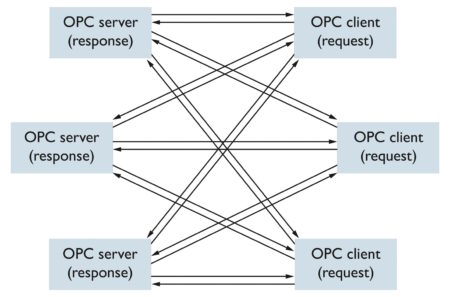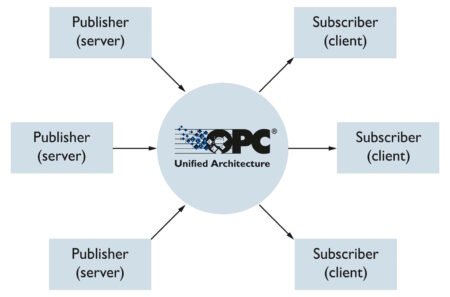SPONOSORED BY: Phoenix Contact
Efficient engineering with a hands-on approach
OPC UA is and will remain one of the most important communication technologies. OPC UA features a comprehensive range of functions and enables the modeling of very simple to highly complex information models. Using this standard opens up a number of possibilities and opportunities, but also carries the risk of overwhelming new users. Phoenix Contact has responded to this with intuitive solutions and application examples.

In the context of Industry 4.0, OPC UA is undoubtedly one of the most important technologies for mapping and making complex data available. OPC UA is a manufacturer-neutral standard that is being driven forward by the OPC Foundation, a manufacturer-independent technology consortium. OPC UA is based on three pillars:
- Data modeling: the modeling rules even enable the creation of complicated information models.
In addition, there are various companion standards that define model elements for specific assets or technologies. - Security: OPC UA includes built-in security mechanisms, such as encrypted data transmission and role-based access management.
- Communication: two communication paradigms – client/server and pub/sub – are available for exchanging data.
Because of its large scope, OPC UA technology is not exactly easy for new users to get started with. For example, a user who only wants to implement a special use case quickly faces a number of standards, functions, and models that are difficult for them to navigate. With its OPC UA portfolio, Phoenix Contact wants to prevent precisely this scenario in the context of the open PLCnext Technology ecosystem. To this end, the company provides a variety of simple and complicated application examples for the various communication cases, open source software tools as support aids, and meaningful, easy-to-understand documentation, among other things.
PLCnext Store with a package of simple and complex examples
All OPC UA-related control components – i.e., client and pub/sub licenses and application examples – can be obtained via the PLCnext Store [1]. On the online marketplace, there is an example package for the PLC-based client as well as for pub/sub communication between the controllers. Each package contains one simple and one complex example, as well as instructions for commissioning and operating the sample.

In the simple client example, the client reads (subscribes to) a variable that is continuously incremented (counted up) on the server side. The client writes another variable, which is continuously decremented (counted down) on the client side, to the server. The complex client example includes a system simulation for a remote-controlled process-related storage container with functions for filling, pumping, and emptying the container. The simple pub/sub example project contains two controllers, each of which publishes (writes) one variable and subscribes to (reads) one variable. One of the variables is cyclically incremented and the other is cyclically decremented. The complex pub/sub example consists of system simulations for a pallet warehouse and a conveyor system that exchange data with each other via the OPC UA pub/sub model.

Support with intuitive software tools and understandable documentation
The helpful open source software tools mentioned above can be obtained via the PLCnext GitHub repository [2]. For example, the eUA_Client_Configurator_Example is available here. This is a tool written in C# which can be used to create complicated client configurations. The example code repository also contains comprehensive instructions and documentation. Further records on all topics relating to OPC UA in PLCnext Technology as well as the general open ecosystem can be called up freely in the PLCnext Info Center [3].
As part of PLCnext Technology, the comprehensive OPC UA portfolio – with its variety of examples, documentation, and open source software – pursues a consistent hands-on approach. This enables inexperienced and experienced users to implement their individual use cases in a targeted and efficient manner.
OPC UA portfolio in the context of the PLCnext ecosystem
The OPC UA portfolio in the context of the PLCnext ecosystem from Phoenix Contact is based on the following elements:
- Intuitive configurability in the engineering of the controllers as well as through files for advanced users
- Trial licenses for all fee-based OPC UA components (client and pub/sub)
- A variety of simple and complex application examples for the different communication scenarios
- Open source software tools as support aids
- Meaningful and easy-to-understand documentation.
Further information:
https://www.phoenixcontact.com/en-us/technologies/communication-technologies/opc-ua

Dr. Andreas Würger, Technology Manager PLCnext Technology, Business Area Industry Management and Automation, Phoenix Contact Electronics GmbH, Bad Pyrmont, Germany
Data sources and captions:
[1] URL: https://www.plcnextstore.com/#/ (Status: 2024-01-09)
[2] URL: https://github.com/orgs/PLCnext/repositories (Status: 2024-01-09)
[3] URL: https://www.plcnext.help/te/About/Home.htm (Status: 2024-01-09)
Figure 1, lead:
(Image source: Funtap@shutterstock.com)
Figure 2:
In the case of OPC UA client/server communication, the server provides data in its address area. Clients connect to the server and have read and write access to the data.
Figure 3:
With OPC UA pub/sub communication, both publishers and subscribers have a dataset configuration. The publisher writes its data exactly as per the structure specified in the dataset, the subscriber expects and interprets the data exactly as defined in the dataset.